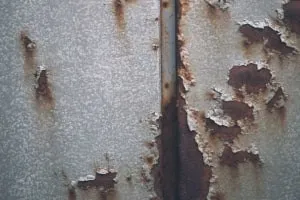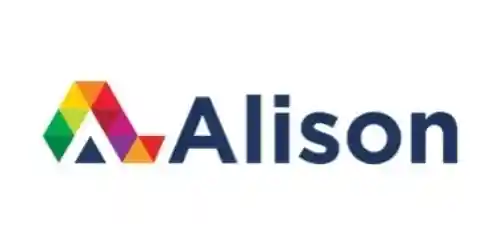
Diploma in Electrochemical Reactions in Corrosion 
Discover the fascinating world of electrochemical reactions in corrosion with our Diploma in Electrochemical Reactions in Corrosion course. Dive into the intricacies of mixed potential theory, the Helmholtz double-layer, and the Tafel equation. Explore the effects of area and galvanic coupling on corrosion. Uncover the secrets of passivation and its interaction with polarization and the Pourbaix diagram. Delve into Faraday's experiment and the ennoblement of metal. Learn to calculate the Pilling-Bedworth ratio and understand oxidation processes. Expand your knowledge of electrochemical reactions in corrosion - enroll now and unlock a world of possibilities. ▼
ADVERTISEMENT
Course Feature
![]() Cost:
Cost:
Free
![]() Provider:
Provider:
Alison
![]() Certificate:
Certificate:
No Information
![]() Language:
Language:
English
Course Overview
❗The content presented here is sourced directly from Alison platform. For comprehensive course details, including enrollment information, simply click on the 'Go to class' link on our website.
Updated in [September 15th, 2023]
What does this course tell?
(Please note that the following overview content is from the original platform)
This course will introduce you to the important aspects of electrochemical reactions, how they react with the mixed potential theory, as well as the formation of the Helmholtz double-layer and the Tafel equation. You will learn about the area effect on the corrosion of the active component connected to a noble component, as well as galvanic coupling between two active metals in an electrolyte.
You will study the features and elements of passivation, as well as the interaction between polarization and the Pourbaix diagram. Learn about Faraday's two-staged experiment on converting iron with HNO3 (nitric acid) solution from the passive to the active stage, as well as the ennoblement of metal in relation to passivity. The interaction of cathodic and anodic polarization plots when a system goes into passivation mode will also be highlighted in this course.
Furthermore, you will gain an understanding of how to calculate the Pilling-Bedworth ratio in different metals, as well as the two fundamental aspects of oxidation. You will also learn how to plot the Ellingham diagram, as well as how an oxidation process occurs in metal deficient diffusion of the interstitial cation. This free online course will be of great value to anyone with an interest in electrochemical reactions in corrosion – register now and expand your knowledge today.
We consider the value of this course from multiple aspects, and finally summarize it for you from three aspects: personal skills, career development, and further study:
(Kindly be aware that our content is optimized by AI tools while also undergoing moderation carefully from our editorial staff.)
What skills and knowledge will you acquire during this course?
Upon completion of the Diploma in Electrochemical Reactions in Corrosion, the student will have acquired a comprehensive understanding of the important aspects of electrochemical reactions, mixed potential theory, Helmholtz double-layer, and the Tafel equation. They will be able to identify the area effect on the corrosion of active components connected to noble components, as well as galvanic coupling between two active metals in an electrolyte. The student will also be able to explain the features and elements of passivation, as well as the interaction between polarization and the Pourbaix diagram. They will be able to describe Faraday's two-staged experiment on converting iron with HNO3 (nitric acid) solution from the passive to the active stage, as well as the ennoblement of metal in relation to passivity. Additionally, the student will be able to calculate the Pilling-Bedworth ratio in different metals, as well as the two fundamental aspects of oxidation. They will also be able to plot the Ellingham diagram, as well as how an oxidation process occurs in metal deficient diffusion of the interstitial cation.
How does this course contribute to professional growth?
This course, the Diploma in Electrochemical Reactions in Corrosion, offers significant contributions to professional growth. By studying the important aspects of electrochemical reactions and their interaction with the mixed potential theory, individuals can develop a deeper understanding of corrosion processes. This knowledge is highly valuable in various industries, such as manufacturing, engineering, and materials science.
One key aspect covered in this course is the formation of the Helmholtz double-layer and the Tafel equation. Understanding these concepts allows professionals to analyze and predict corrosion rates, enabling them to make informed decisions regarding material selection and corrosion prevention strategies. This knowledge is particularly relevant for professionals working in industries where corrosion can have severe consequences, such as the oil and gas, aerospace, and marine sectors.
Additionally, the course delves into the area effect on the corrosion of active components connected to noble components and the galvanic coupling between two active metals in an electrolyte. This knowledge is crucial for professionals involved in designing and maintaining complex systems where different metals are in contact, such as pipelines, heat exchangers, and electrical circuits. By understanding the principles behind galvanic corrosion, professionals can implement effective measures to mitigate this type of corrosion and ensure the longevity and reliability of their systems.
Furthermore, the course covers passivation, polarization, and the Pourbaix diagram. These topics are essential for professionals working with materials that can form passive layers, such as stainless steel and aluminum. Understanding the interaction between polarization and the Pourbaix diagram allows professionals to assess the corrosion resistance of different materials and make informed decisions regarding their use in specific environments.
The course also explores the Pilling-Bedworth ratio and the fundamental aspects of oxidation. These concepts are particularly relevant for professionals involved in surface treatment and coating processes. By understanding the Pilling-Bedworth ratio, individuals can determine the thickness of protective coatings required to prevent corrosion effectively. Additionally, knowledge of oxidation processes and the Ellingham diagram enables professionals to optimize surface treatment processes and select suitable materials for specific applications.
Overall, the Diploma in Electrochemical Reactions in Corrosion provides professionals with a comprehensive understanding of electrochemical reactions and their role in corrosion. This knowledge equips individuals with the skills and expertise necessary to address corrosion-related challenges in their respective fields. By expanding their knowledge through this course, professionals can enhance their problem-solving abilities, make informed decisions, and contribute to the overall success and growth of their organizations.
Is this course suitable for preparing further education?
Yes, this Diploma in Electrochemical Reactions in Corrosion course is suitable for preparing further education. It provides a comprehensive overview of the important aspects of electrochemical reactions, mixed potential theory, formation of the Helmholtz double-layer and the Tafel equation, and more. It also covers topics such as passivation, polarization, Faraday's two-staged experiment, ennoblement of metal, Pilling-Bedworth ratio, Ellingham diagram, and oxidation process. This course is a great way to gain a better understanding of electrochemical reactions in corrosion and prepare for further education.
Course Syllabus
Aspects of Electrochemical Polarization and Mixed Potential Theory
In this module, you will be introduced to the two important aspects of electrochemical reactions, as well as their interactions with mixed potential theory. You will also be introduced to the concepts of Tafel equation, cathodic and anodic reactions, as well as how to plot appropriate graphs representing the reactions and the formation of the Helmholtz double-layer.Corrosion Processes on the basis of Mixed Potential Theory
In this module, you will be introduced to the evolution of microstructure in pearlite, the concept of an optical microscope, as well as their formation. You will also be introduced to the concepts of etching, equilibrium potentials, corrosion processes, galvanic coupling and depolarization effects.Area Effect Factor and Galvanic Coupling in Active Metals
In this module, you will be introduced to the different values of half-cell, anodic and cathodic reactions, as well as the parallel line of individual Tafel lines for hydrogen evolution reaction on zinc and platinum. You will also be introduced to the area effect on the corrosion of an active component, as well as the galvanic coupling between two active metals in an electrolyte.Corrosion Rate of Active Metals in a Concentration Controlled Environment
In this module, you will be introduced to the two segments of cathodic protection which are the sacrificial anode and impressed current cathodic protection, as well as the effect of magnesium and zinc on iron corrosion when they are galvanically coupled. You will also be introduced to how corrosion current density can be affected in both activation, as well as concentration controlled environment. The relationship between velocity and corrosion rate will also be highlighted in this module.Diploma in Electrochemical Reactions in Corrosion - First Assessment
You must score 80% or more to pass.Theory of Passivation and Pourbaix Diagram
In this module, you will be introduced to the features, elements and types of passivation, as well as the interaction between polarization and the Pourbaix diagram. You will also be introduced to Faraday's two-staged experiment on converting iron with HNO3 solution from the passive to the active stage, as well as the ennoblement of metal in relation to passivity.Anodic and Cathodic Polarization in Active-Passive Metals
In this module, you will be introduced to the interaction of cathodic and anodic polarization plots for a system in passivation mode, as well as the effect of the interaction of cathodic polarization at different plots. You will also be introduced to the different criteria for stable passivity, complete passivity and primary passivity in relation to the anodic and cathodic polarization line.Corrosion Resistance of a Metal and Pilling-Bedworth Ratio
In this module, you will be introduced to the anodic protection of active-passive metal due to the lesser current flow in the circuit for the same degree of protection, as well as the relative corrosion response of a metal in an electrolyte. You will also be introduced to the different stages of oxidation, as well as how metals react with gaseous oxygen to form metal oxides.Oxidation Mechanisms and Ellingham Diagram
In this module, you will be introduced to the calculation of the Pilling-Bedworth Ratio in different metals, as well as the fundamental aspects of oxidation which are thermodynamics of oxide formation and kinetic analysis of oxide growth. You will also be introduced to the plotting of the Ellingham diagram, as well as how the oxidation process occurs in metal deficient diffusion of the interstitial cation.Diploma in Electrochemical Reactions in Corrosion - Second Assessment
You must score 80% or more to pass.Course assessment
Course Provider

Provider Alison's Stats at AZClass
Discussion and Reviews
0.0 (Based on 0 reviews)
Explore Similar Online Courses

Diploma in Chemical Process Safety

The Dairy Industry: Emerging Technology

Python for Informatics: Exploring Information

Social Network Analysis

Introduction to Systematic Review and Meta-Analysis

The Analytics Edge

DCO042 - Python For Informatics

Causal Diagrams: Draw Your Assumptions Before Your Conclusions

Whole genome sequencing of bacterial genomes - tools and applications

Additive Manufacturing Architecture

AP Chemistry: Chemical and Nuclear Reactions


Start your review of Diploma in Electrochemical Reactions in Corrosion